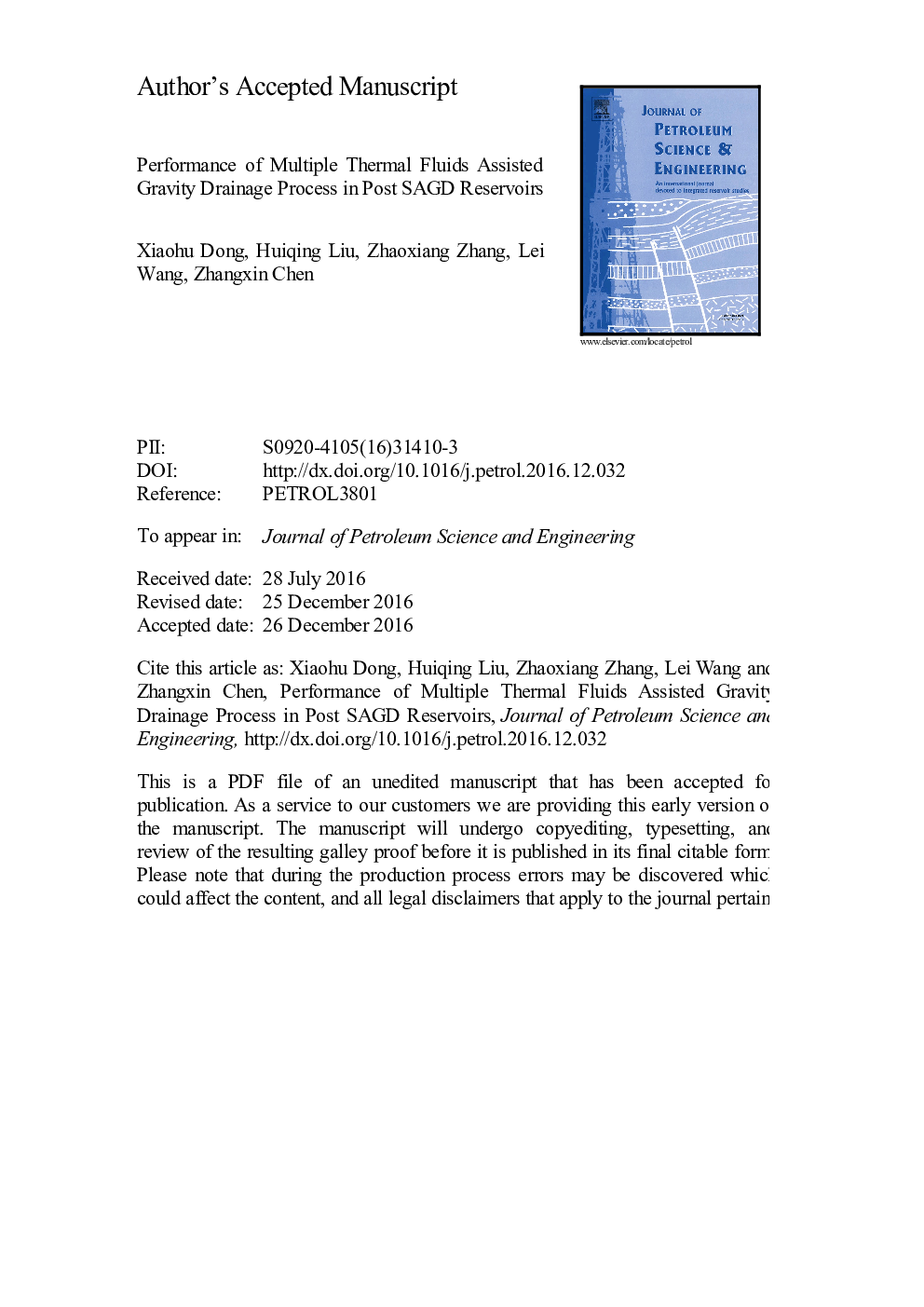| Article ID | Journal | Published Year | Pages | File Type |
|---|---|---|---|---|
| 5484237 | Journal of Petroleum Science and Engineering | 2017 | 29 Pages |
Abstract
Multiple thermal fluids injection process is a new heat-carrier process proposed in recent years as an EOR process for heavy oil reservoirs. Compared with the conventional saturated-steam injection process, it combines the multiple advantages of immiscible and/or miscible gas injection and thermal recovery processes. In this paper, based on the ideas of the multiple thermal fluids injection process and the conventional steam assisted gravity drainage (SAGD) process, a new recovery process, multiple thermal fluids assisted gravity drainage (MFAGD) process is proposed to enhance heavy oil recovery for post SAGD reservoirs. Two 3D gravity drainage experiments (SAGD and SAGD-MFAGD) are first conducted to explore EOR mechanisms of the multiple thermal fluids in heavy oil reservoirs. Subsequently, numerical simulations are performed to match the experimental measurements. Then the EOR mechanisms and the remaining oil saturation distribution are analyzed. Furthermore, the differences between the SAGD, steam-and-gas-push (SAGP) and MFAGD processes are discussed. From a dimensionless scaling analysis for gravity drainage process, lab scale parameters are converted to field scale ones, and a field scale simulation model is developed. Through the analysis and simulation, the reservoir adaptability of the MFAGD process is investigated, and its operation parameters are numerically optimized. Experimental results indicate that a strategic combination of the SAGD and MFAGD processes can tremendously improve the development of heavy oil reservoirs. The MFAGD process can be adopted as a follow-up recovery technique after the SAGD process for heavy oil reservoirs. As its EOR mechanisms, in addition to the conventional thermal recovery mechanisms of steam injection, the results show that heat insulation, energy recovery, gas dissolution, foamy oil and auxiliary well cleanup are all its important mechanisms. In comparison with SAGD, this new process has a higher recovery rate, a lower steam injecting volume and a lower cumulative steam-oil ratio (cSOR). Numerical results also show that the steam chamber from MFAGD is shaped like a liquid drop instead of a conventional inverted triangle from SAGD. The net-to-gross value and formation thickness have a great influence on the performance of MFAGD. It is found that for MFAGD, the optimal steam-gas ratio in the standard conditions is 1:1, the steam injection rate is 200Â m3/d, and the operation pressure is 3.0Â MPa for the study reservoir. The MFAGD process will be a potentially important EOR method for post SAGD heavy oil and oil sands reservoirs.
Related Topics
Physical Sciences and Engineering
Earth and Planetary Sciences
Economic Geology
Authors
Xiaohu Dong, Huiqing Liu, Zhaoxiang Zhang, Lei Wang, Zhangxin Chen,
